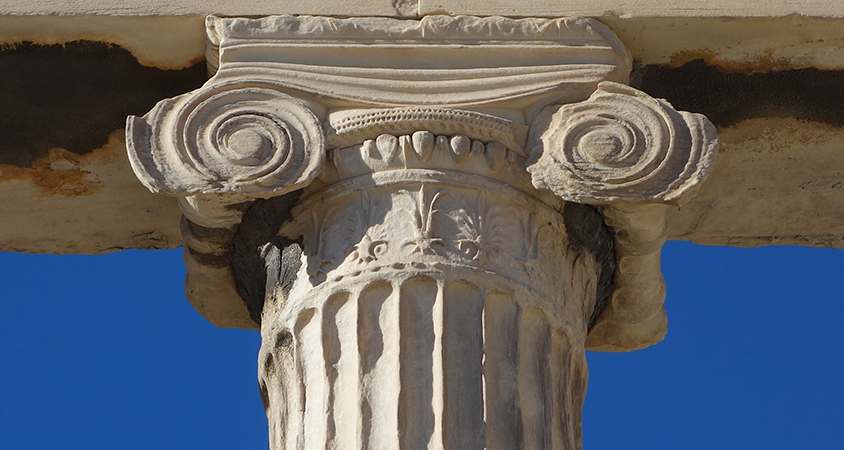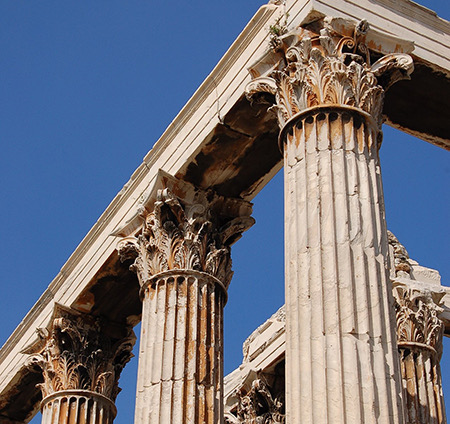Athens is renowned for its ancient heritage and iconic landmarks, with the Acropolis and Parthenon being the most popular tourist destinations. However, there’s more to this city than just its ancient ruins. From charming neighborhoods to contemporary art galleries, Athens offers a diverse range of experiences for those willing to venture beyond the Acropolis.In this guide, we’ll take you on a journey to discover the lesser-known attractions of Athens, giving you a unique perspective on this ancient city.
Whether you’re a history buff, culture enthusiast, or simply looking for an off-the-beaten-path experience, this guide has something for everyone. So, let’s explore the hidden gems of Athens together.
The Ancient Agora

The Ancient Agora of Athens is one of the most important historical sites in the city. It was the center of political, commercial, and social life during the time of Ancient Greece. The Agora, meaning “gathering place” in Greek, was the heart of the city and served as the hub of all civic activities.
One of the main structures found in the Ancient Agora is the Stoa of Attalos. This grand two-story building was built in the 2nd century BC and served as a market and meeting place. The Stoa of Attalos is now home to the Museum of the Ancient Agora, which contains many artifacts and exhibits that give visitors an insight into the daily life of ancient Athenians.
Another significant structure in the Ancient Agora is the Temple of Hephaestus. This well-preserved temple is dedicated to the god of metalworking and is considered one of the best-preserved ancient Greek temples in the world. The temple is surrounded by beautiful ancient ruins and offers a glimpse into the architectural style of ancient Greece.
In addition to these main structures, the Ancient Agora also features the Monument of the Eponymous Heroes, the Metroon, and the Altar of the Twelve Gods. Visitors can also see the remains of a Roman-era market and the ancient city’s main drain.
To fully enjoy your visit to the Ancient Agora, it is best to go early in the morning or late in the afternoon to avoid the heat and crowds. The site is also easily accessible by public transportation, with the Monastiraki metro station located just a short walk away.
In summary, the Ancient Agora of Athens is a must-see destination for anyone interested in the history and culture of ancient Greece. Visitors can explore the main structures and ruins, such as the Stoa of Attalos and the Temple of Hephaestus, and gain a deeper understanding of the daily life and activities of ancient Athenians. To make the most of your visit, plan to go early or late and take advantage of the convenient public transportation options.
The National Archaeological Museum

The National Archaeological Museum in Athens is a must-visit destination for anyone interested in ancient Greek history and culture. This world-renowned museum is home to some of the most important and interesting artifacts from ancient Greece, dating back to the Neolithic period.
The museum’s collection is vast and diverse, spanning over 11,000 years of Greek history. Visitors can explore everything from ancient pottery and sculptures to jewelry and weapons. The museum’s most famous exhibit is the Antikythera mechanism, an ancient mechanical computer dating back to the 2nd century BC.
One of the highlights of the National Archaeological Museum is the Mycenaean collection, which includes a wealth of gold artifacts from the Mycenaean civilization, including the famous Mask of Agamemnon. Visitors can also see the Cycladic collection, which includes marble figurines from the Cycladic islands dating back to the 3rd millennium BC.
The museum also has an extensive collection of Greek and Roman sculptures, including the famous Poseidon and Zeus statues, as well as a vast collection of vases and pottery.
To plan a visit to the National Archaeological Museum, it is important to note that the museum is closed on Mondays. On other days, the museum is open from 8 am to 8 pm. Ticket prices are €12 for adults and €6 for students and children. It is recommended to purchase tickets in advance to avoid waiting in long lines.
Overall, the National Archaeological Museum is a must-see destination for anyone visiting Athens. With its vast collection of ancient Greek artifacts and its knowledgeable staff, the museum offers a fascinating glimpse into the history and culture of ancient Greece.
The Plaka Neighborhood

The Plaka neighborhood is a charming and historic area located in the heart of Athens, Greece. Known as the “old town” of Athens, the Plaka is a maze of narrow streets lined with traditional Greek houses, souvenir shops, and local taverns. The neighborhood is rich in history, culture, and architecture, making it a must-see destination for any traveler visiting Athens.
One of the main highlights of the Plaka is the ancient Agora, which is a well-preserved ruin that dates back to the 5th century BC. The Agora was the center of ancient Athens, and it served as a marketplace, political center, and religious center. Visitors can explore the ruins and learn about the history of the Agora by taking a guided tour.
Another popular attraction in the Plaka is the Monastiraki Flea Market, which is a lively outdoor market that sells everything from antiques to clothing and jewelry. The market is a great place to shop for souvenirs and gifts, as well as to experience the bustling atmosphere of Athens.
For those looking for a taste of traditional Greek cuisine, the Plaka has plenty of restaurants and taverns to choose from. Some popular options include Ta Karamanlidika Tou Fani, which serves traditional Greek dishes made with locally sourced ingredients, and Ta Karamanlidika Tou Fani, which is known for its delicious meat dishes.
To get to the Plaka, visitors can take the metro to the Monastiraki station or take a bus or taxi to the neighborhood. When visiting the Plaka, it is best to wear comfortable shoes and be prepared for a lot of walking. The neighborhood can get quite crowded during peak tourist season, so it is best to visit in the early morning or late evening to avoid the crowds.
Overall, the Plaka neighborhood is a must-see destination for any traveler visiting Athens. With its rich history, culture, and architecture, the Plaka offers a unique glimpse into the past and present of Athens. Whether you’re looking to explore ancient ruins, shop for souvenirs, or taste traditional Greek cuisine, the Plaka has something for everyone.
The Kerameikos Cemetery

The Kerameikos Cemetery, located just outside the city walls of ancient Athens, is a must-see for any history or archaeology buff visiting the city. This ancient burial ground, which dates back to the 11th century BC, is one of the most significant and well-preserved cemeteries in Greece.
One of the main features of the Kerameikos Cemetery is the burial grounds, which are divided into two sections: the public burial ground and the private burial ground. The public burial ground is where common citizens were buried, while the private burial ground was reserved for the aristocracy and wealthy citizens. Visitors can see a variety of grave markers, including steles (stone slabs) and kouros (statues of young men).
Another major feature of the Kerameikos Cemetery is the monuments, including the Lion of Keirameikos, a limestone statue of a lion that once stood guard at the entrance to the cemetery. The Kerameikos Cemetery also features a number of other monuments, including the Sacred Gate and the Stoa of the Dead.
When visiting the Kerameikos Cemetery, it’s best to go in the morning or late afternoon to avoid the heat of the day. The cemetery is open daily, but it is closed on certain holidays, so be sure to check the schedule in advance. To get to the cemetery, take the metro to the Kerameikos station and walk a short distance to the site.
Overall, the Kerameikos Cemetery is a fascinating and historically rich destination that offers a unique perspective on ancient Athens. Whether you’re an archaeology enthusiast or just looking to explore a lesser-known side of the city, the Kerameikos Cemetery is definitely worth a visit.
In conclusion, there are countless ways to explore Athens beyond the famous Acropolis. From the ancient Agora, to the National Archaeological Museum, to the charming Plaka neighborhood, and the historic Kerameikos Cemetery, there is something for every traveler to discover.
When planning your trip to Athens, it’s important to remember that there’s so much more to this ancient city than just the Acropolis. By venturing beyond the typical tourist hotspots, you’ll be able to gain a deeper understanding of the city’s rich history and culture.
Whether you’re a history buff, a culture lover, or simply looking for a unique experience, Athens has something to offer. We recommend taking the time to plan your visit and make the most of your time in this incredible city. Don’t forget to visit the lesser-known attractions, as they are sure to leave you with a more fulfilling and richer experience.
























